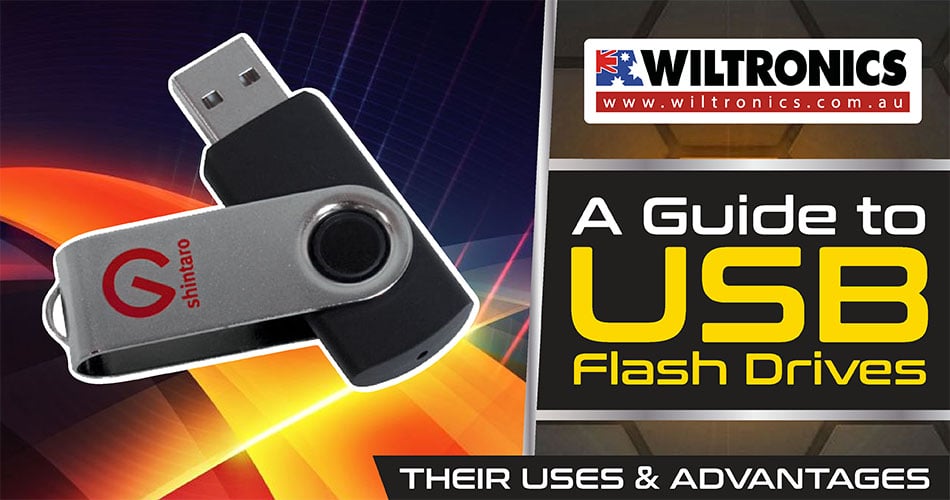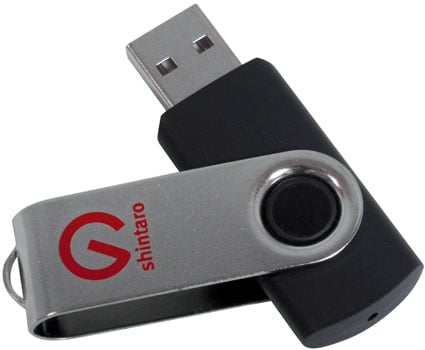A Guide to USB Flash Drives: What Are They, Their Uses and Advantages
August 5, 2021

What do you need to know about USB flash drives?
Here is the thing about USB flash drives. They may be small but they can store a lot of data.
They are so common that you’ve likely used one to backup and transport files between computers. But on top of storing data, there is much more you can do with a USB stick.
This includes some cool things you did not know about. Hint: just like in the movies.
USB flash drives have become a huge part of the storage device industry today. You would be surprised what these thumb drives can do for you, too!
If you are interested in knowing more about what a USB flash drive is, including its components, uses, and advantages, read ahead. We have a good deal of information to share with you today.
What Does USB Flash Drive Mean?
A USB flash drive is a device used for data storage that plugs into a USB port. It includes a flash memory and an integrated Universal Serial Bus (USB) interface—hence the name.
All operating systems can support USB drives, making it a universal tool. Physically, they are small yet durable, reliable, and capable of storing a large quantity of data.
The larger their storage space, the faster they operate. For one, a USB flash drive with a memory chip that can hold up to a terabyte can function like a hard drive.
They are commonly used for auxiliary storage, backup, and data transfer between computers. Trivia: In 2013, Kingston Technology first introduced the 1TB drive. And in 2017, it increased to 2TB.
USB drives can also hold an operating system and be used to boot a computer as they contain a bootable program (disk), which takes control of the computer.
According to the Universal Serial Bus mass storage standard, a USB flash drive is supported by all operating systems and BIOS (basic input/output system). Unlike other optical disk drives and floppy disks, USB drives can store more data and transfer it at a faster rate.
A USB flash drive is also known by many names. In addition to ‘USB drive‘ and ‘flash drive‘, there are other monikers, including:
- Flash disk
- Thumb stick
- USB stick
- Jump drive
- Pen drive
Note: JumpDrive and ThumbDrive are brands from Lexar and Trek 2000 International. Whereas the Memory Stick is Sony’s trade name for its digital camera memory cards, not a USB drive.
The components
A typical USB drive consists of a USB connector protected and electrically insulated inside a plastic or rubber case. A small printed circuit board with surface-mounted built-in circuits are found within the casing.
Listed below are the main components of a USB flash drive:
- Standard USB plug. This feature enables the flash drive to connect to a device, e.g., a computer or mobile phone.
- USB mass storage controller. This acts as the microcontroller. It has a small amount of RAM (Random Access Memory) and ROM (Read-Only Memory).
- NAND flash memory chip. Stands for Not And, a NAND flash memory chip is where the data is stored.
- Crystal oscillator. This component is what controls the data output.
Transfer Speed
The USB transfer speed has been upgraded twice since the standard was introduced in 1996. The original standard (USB 1.0/1.1) can only handle 1.5MBps data-transfer speed.
Meanwhile, the 2.0 can handle up to 60MBps and 3.0 tops out at 600MBps.
USB drive manufacturers use the data transfer ratings of CD-ROMs where each “x” is equivalent to 150KB per second. For instance, a 90x drive is 13.5MB/sec (90 x 150).
Note: A USB flash drive can only transfer data as quickly as the device’s USB standard will allow.
Where is a USB flash drive used?
Computers, gaming consoles, and digital devices (e.g. keyboard, mouse, cameras, smartphones, and tablets) are all equipped with USB technology. It is one of the most commonly used interfaces for connecting peripherals.
In a nutshell, a USB flash drive can be used almost anywhere as it is everywhere!
The Advantages of USB Flash Drives
USB drives are all small in size and lightweight, making them highly portable. Their portability is one of their top advantages.
But on top of that, we listed below the other biggest benefits, which you won’t find as often with other types of storage devices.
1. The cost: inexpensive
Comparing to most external storage devices on the market, such as a hard drive, USB drives are relatively inexpensive. For one, they can be done at a very low cost since they can be easily scaled.
But the price can vary depending on the storage capacity. Still, a USB flash drive is an affordable and reliable option for those with a low budget.
2. High-speed transfer rate
Since USB flash drives do not require any form of internet connection, most have high-speed transfer rates. Keep in mind, though, that speed is determined by a few factors.
This includes the USB version, hardware bus and USB controller device. But overall, their transfer rate is one of their additional benefits.
For one, today’s USB 3.x devices have a transfer rate of up to 4.8GB per second. It is the speed that other storage devices cannot match. Even the fastest hard-disk drives can only reach transfer speeds of up to 150MB.
3. Increased durability
USB flash drives lack moving parts, which is an advantage as they are less vulnerable to damage from drops or shocks. Once you insert them into the USB port, they become solid-state.
Traditional hard-disk drives are vulnerable to damage due to parts made of aluminium or glass.
4. Maximum portability
As mentioned earlier, USB drives are smaller than other types of data storage devices. This makes them easy to store in convenient places, such as pockets and keychains.
With external hard drives, considering their bulky appearance, bringing them along can be a bit of a challenge. For one, they are a bit heavy and they take up more space.
5. Compatibility
Many operating systems and devices support USB drives. Be it a laptop, a computer, or a gaming console, these platforms are all equipped with ports for three or more USD drives to plug in.
The USB interface has become one of the best ways to connect flash drives to nearly any device. This is far better than old-school SD memory cards, for which most computers do not have compatible slots.
Uses of USB Flash Drives You Didn't Know About
There are surprising ways you can use a USB flash drive and we compiled a few of them below. If you are interested to know what these are, just read ahead.
- Lock and unlock a computer. You might have seen this in movies, but you can actually do it in real life! With the free Predator security software, you can lock and unlock a computer with a physical key, a.k.a. a USB drive.
- Run portable apps anywhere. With a USB stick, you can easily copy portable apps and run them from any suitable device. This also includes browsers, email tools, and messaging apps.
- Stay secure online. A USB drive can be used to keep your online activity private. With an operating system (OS) like Tails, you can stay secure online. Each time you use Tails on your USB flash drive, it starts a whole new session; no logs are kept.
See how powerful a small storage device like a USB drive can be?
Note: Predator is one of the most popular software to turn your USB drive into a security control device. It is a free Windows program that turns your flash drive into a key that can lock/unlock your computer.
The Bottom Line
By now, you should have an idea of what a USB flash drive is, including its components, uses, and advantages.
The affordability and versatility of USB drives make them a great investment. Whether it is for work, school, or personal use, this small yet powerful device always comes in handy.

If you are looking for USB flash drives for holding all your photos, videos, music and other files, check out our Swivel-Type USB Flash Drives. They are great for bringing files to and from work or school, or for personal use. They are available in storage capacities from 8GB to 128GB.
Even better, these sticks have rotating swivel covers for protecting the USB drive – no more lost lids!
© Electrotech Brands Pty Ltd 2021


Write a Comment
You must be logged in to post a comment.